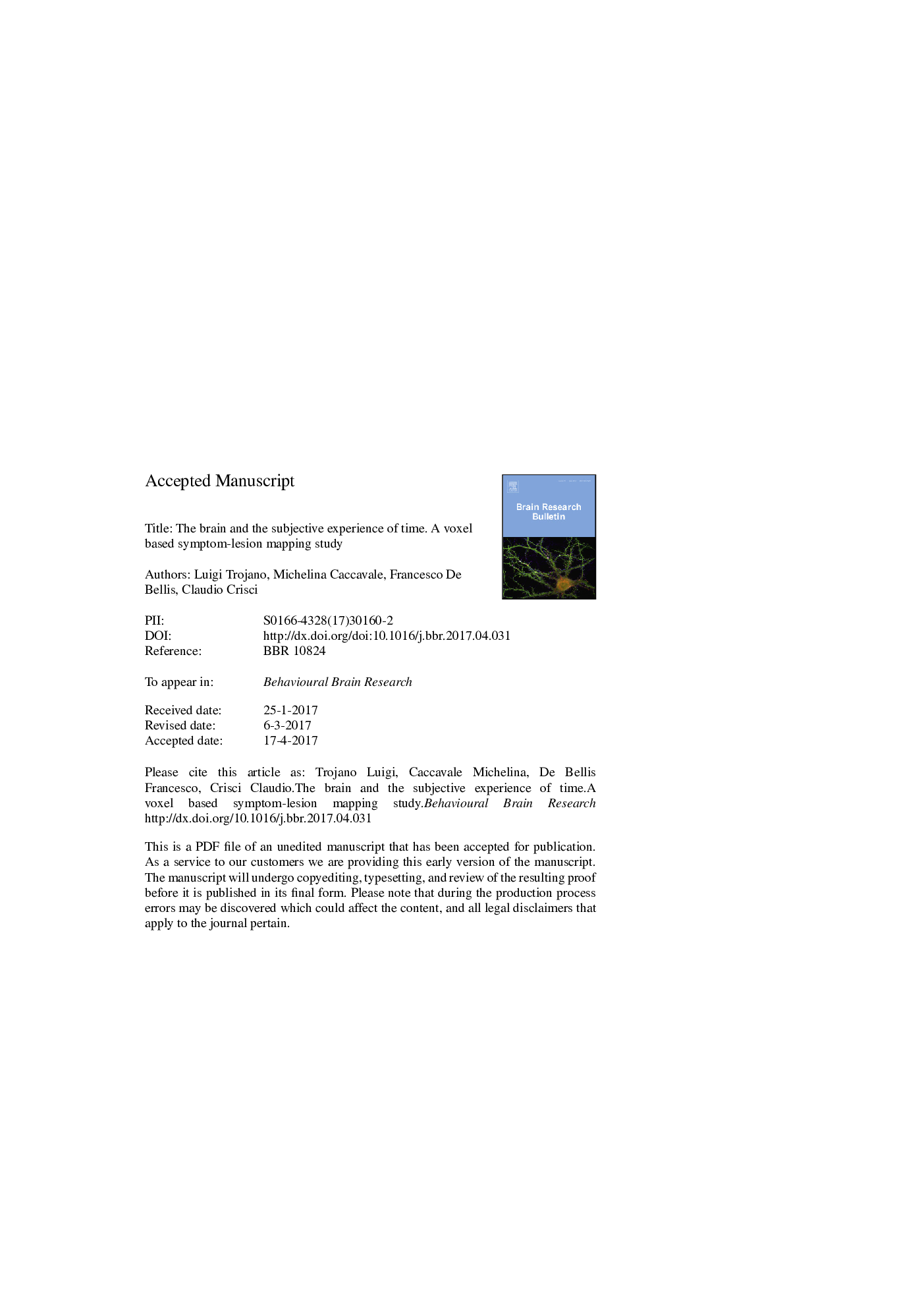| Article ID | Journal | Published Year | Pages | File Type |
|---|---|---|---|---|
| 5735430 | Behavioural Brain Research | 2017 | 32 Pages |
Abstract
The aim of the study was to identify the anatomical bases involved in the subjective experience of time, by means of a voxel based symptom-lesion mapping (VLSM) study on patients with focal brain damage. Thirty-three patients (nineteen with right-hemisphere lesions âRBD, and fourteen with left lesion- LBD) and twenty-eight non-neurological controls (NNC) underwent the semi-structured QUEstionnaire for the Subjective experience of Time (QUEST) requiring retrospective and prospective judgements on self-relevant time intervals. All participants also completed tests to assess general cognitive functioning and two questionnaires to evaluate their emotional state. Both groups of brain-damaged patients achieved significantly different scores from NNC on the time performance, without differences between RBD and LBD. VLSM showed a cluster of voxels located in the right inferior parietal lobule significantly related to errors in the prospective items. The lesion subtraction analysis revealed two different patterns possibly associated with errors in the prospective items (the right inferior parietal cortex, rolandic operculum and posterior middle temporal gyrus) and in the retrospective items (superior middle temporal gyrus, white matter posterior to the insula).
Related Topics
Life Sciences
Neuroscience
Behavioral Neuroscience
Authors
Luigi Trojano, Michelina Caccavale, Francesco De Bellis, Claudio Crisci,
